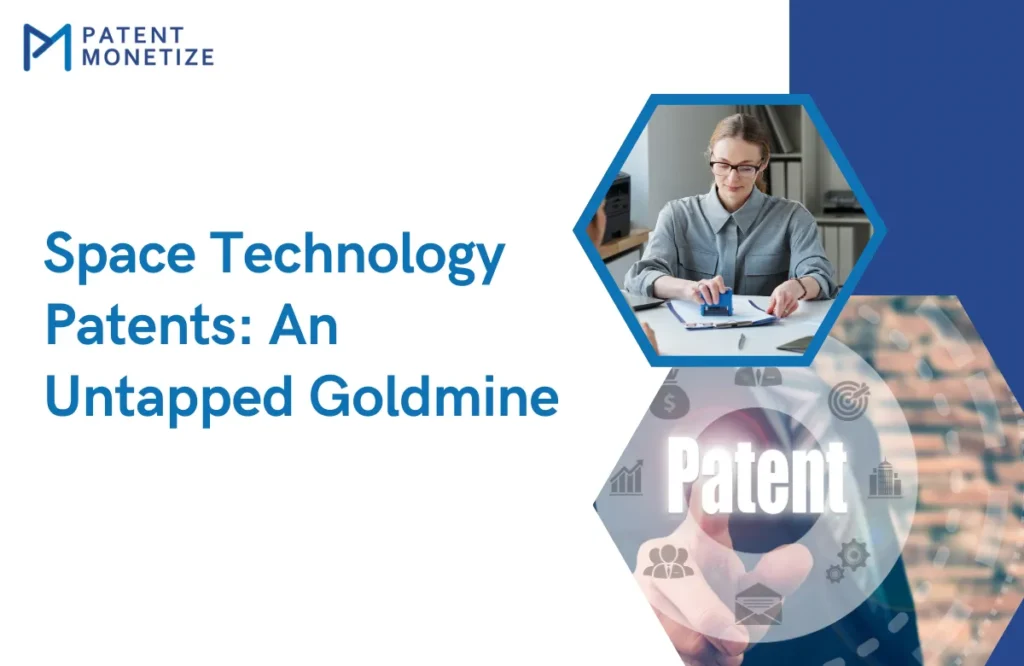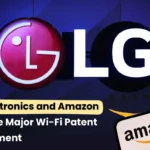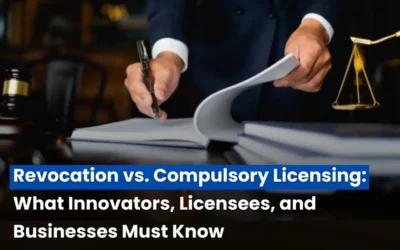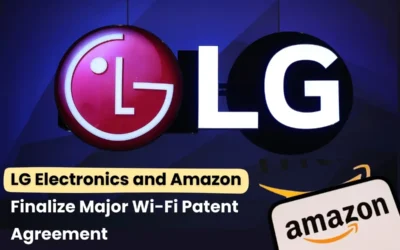
The space sector is experiencing a never-before-conceived revolution fueled by investment from private companies, cooperation with governments, and cutting-edge technological innovations. SpaceX, Blue Origin, and Virgin Galactic are some of the entities that have placed space travel on record-breaking trajectories, prompting the world to enter an innovative race. Whereas during this boom, space technology patents are turning valuable intellectual properties that can generate massive revenue streams and gain technological dominance, the space patents remain dormant and present a gigantic goldmine for investors and entrepreneurs to cash in on.
Why Space Technology Patents Matter
1. Driving Innovation
Patents are an important driving force for innovation through protection from new space vehicle design technology, propulsion technologies, satellite communications, and extraterrestrial resource development. Patents encourage R&D through protection by law and market monopoly protection for inventors.
2. Competitive Advantage
Strong space technology patents for companies give them a competitive edge in seeking government contracts, strategic alliances, and new markets. Patents serve as negotiating chips in licensing agreements and cooperation with foreign space governments.
3. Revenue Generation
Patent licensing and technology transfers generate massive revenues. Companies can earn revenues by permitting other companies to use their own patented technology, for a fee of royalties.
4. Market Expansion
Commercial space ventures are expanding to the point of encompassing space travel, satellite internet constellations, and lunar resource exploitation, where these technologies have more patent involvement.
Read Also: How to Maximize the Value of Your Patent Through Smart Licensing Strategies
Expanded Key Areas of Space Technology Patent Filings
1. Spacecraft and Launch Systems
Patents for reusable rockets, composite lightweight materials, construction of modular space vehicles, vertical landing, and autonomous system navigation are most common in this category. Recent advancements include spaceplane design for converting atmospheric flight into space travel and VTOL ground and space launch systems. Efforts are made to reduce launch costs, maximize payload, and enable quick turnaround for multiple launches.
2. Propulsion Technologies
Space propulsion systems are the key to space exploration. Patents include ion space propulsion systems for interplanetary long-distance space travel, nuclear space propulsion systems with minimum interplanetary travel times, electromagnetic thrusters with maximum fuel economy, solar sails propelled by sunlight as a propulsion power, and environment-friendly fuels with minimum environmental footprint. Patents now focus on hybrid propulsion systems with chemical propulsion to ascend and electric propulsion to reposition in orbit for economy and rapid response.
3. Satellite Systems
Increasing satellite launches have been inspiring patents for miniaturized satellites (i.e., CubeSats), high-gain antenna technology, high-data-rate communication systems, and optical communications systems for enabling data to be transferred at a higher rate. The technologies also include inter-satellite links for enabling autonomous satellite constellations to be achieved, as well as space-based platforms for processing data with minimal ground station support.
4. Space Mining and Resource Utilization
As more attention is being drawn to space mining beyond our world, patents include means for asteroid mining, lunar regolith mining, and in-situ utilization of resources (ISRU) technologies for transforming space material into oxygen, fuel, or building material. Technology includes robot drill equipment, autonomous excavators, and microgravity factories for extracting metal, water, and building material directly from space itself.
5. Space Habitats and Life Support
Sustainable human presence in space requires closed-loop life support technology to recycle air and water, radiation shielding to protect against cosmic rays, modular space station architecture to allow easy reconfiguration, and inflatable habitat modules to minimize the cost of transportation and deployment. Patents also address 3D-printed habitats based on lunar or Martian regolith and recycling systems for wastes that enable long-duration survival.
6. Space Debris Mitigation and Removal
Since space orbital debris is a high-priority field, patents are increasingly sought after for active space debris removal technology, robot arms to capture, net and harpoon capture technologies to recover dead satellites, and controlled de-orbiting technology with the help of small propulsion modules on retired spacecraft to guide them to safe atmospheric burn-up.
7. Space Robotics and Autonomous Systems
Patents in this category are extravehicular activity (EVA) robots to assist astronauts, lunar hostile environment rovers, autonomous repair satellite systems, and in-orbit assembly robots to assemble satellites or space structure assembly. In-orbit servicing robotic arms and in-space building robotic arms are of the highest priority with respect to minimizing the cost and maximizing the efficiency of the mission.
8. Space Navigation and Positioning Systems
As man ventures into space, patents include space navigation systems of spacecraft in outer space using pulsars or light beacons, self-sustaining systems for correcting trajectories, martian and lunar GPS space-borne systems, and interstellar positioning technology that would send spacecraft into other solar systems.
9. Space Communications and Networking
Space communications and operations and space safety are paramount. Patents shield laser-based technology with higher bandwidth, low-latency satellite communications, deep-space transmission systems, quantum-encrypted satellite communications, and low-power small satellite communications.
10. Thermal Control Systems
It is hard to regulate temperature in space. Patents safeguard new thermal radiators, multi-layer insulation technology, cryogenic fuel storage refrigeration systems, and adaptive heat shielding capable of adjusting to survive violent temperature fluctuations on deep-space missions.
11. Space Energy Systems
As space travel extends beyond Earth, patents cover solar power satellites in space, wireless power beaming systems, energy storage for lunar colonies, and surface-operating nuclear reactors on Mars to produce a guaranteed source of energy.
12. Space Tourism and Commercial Space Travel
The new space tourism industry has led to the development of patents for vehicles of high-altitude suborbital flight, space hotels orbiting in space, thermal reentry protective shields, safety escape systems, and pressurized passenger compartments for a safe and comfortable flight of civilians.
13. Earth Observation and Remote Sensing
Earth observation is a critical component of climate security and monitoring. Patents include hyperspectral imaging satellites, weather-independent imagery with synthetic aperture radar (SAR), geostationary optical sensors, and real-time environmental monitoring platforms.
Read Also: What Are Utility Models and How to Monetize Them Effectively
Patent Strategies for Space Companies
1. Building Robust Patent Portfolios
Space companies must use broad patents covering multiple aspects of their innovation to make international protection possible.
2. Licensing and Collaboration
Companies can license the technologies to other companies in the space industry, resulting in collaborative development processes and reduced development cost.
3. Defensive Patenting
Early patents deter competitors and reduce patent infringement litigation.
4. Valuation and Monetization
Space Patents are worth their weight in gold while negotiating license agreements, raising capital, and investing.
Real-World Examples of companies filing Patents in a specific field.
1. SpaceX
SpaceX owns several patents in reusable rocket and self-landing technologies. The technologies have changed space transportation by reducing the launch cost as well as enabling rocket reusability at high velocities.
2. Blue Origin
Blue Origin owns patents in suborbital spaceflight, engine, and rocket landing locations technologies. Their technologies are leading drivers of commercial spaceflight, with reusable rockets and space tourism missions in the future.
3. NASA Technology Transfer Program
NASA provides public licensing of its patented space technologies for commercial use. The program provides private companies with access to NASA’s large set of innovations, which catalyzes the development of the space economy.
4. Airbus Defence and Space
Airbus holds patents for the production of satellite processes, solar array technology, and new satellite propulsion systems. Airbus can dominate in geostationary satellite systems and satellite deployment planning.
5. Boeing
Boeing patented concepts cover concepts for space station modularity, thermal protection systems, and spacecraft docking systems. Boeing is one of the world’s leaders in human spaceflight programs and deep-space mission systems.
6. Lockheed Martin
Lockheed Martin has patents covering Mars mission exploration landers, heat shields, and space capsule designs. Its Orion spacecraft development is known as the backbone of NASA. It aims to return humans to the Moon.
7. Northrop Grumman
Northrop Grumman has patented satellite servicing technologies like on-orbit satellite repair robots and fueling systems. The technologies are focus on the increase the life of satellites and maintenance of space infrastructure.
8. Planet Labs
Planet Labs is also a top company using small satellite constellation patents for Earth observation and real-time data processing. Its CubeSat technology is changing remote sensing and environmental monitoring.
9. Made In Space
Made In Space created the first 3D printing technology that is meant to be deployed in microgravity environments. Their patents enable in-orbit production onboard the ISS, and this reduces shipping spare parts from Earth.
10. OneWeb
OneWeb owns patents on LEO satellite constellations. OneWeb’s technology is geared towards providing global broadband internet connectivity, particularly to remote and developing regions.
11. ISRO (Indian Space Research Organisation)
India’s space exploration agency, ISRO, patented and developed technology in satellite launch vehicles, cryogenic engines, satellite propulsion systems, and remote sensing satellites. ISRO innovations lowered the costs of space travel, and India became a model space-faring economy among the developing world.
Challenges in Space Technology Patenting
- Jurisdictional Concerns: Space is a global frontier, and cross-country patenting continues to be a problem.
- Rapid Technological Change: Patents become irrelevant with the span of seconds given by innovation cycles.
- Exorbitant Costs: It is extremely expensive to register and seek space patents all over the world.
Conclusion
Space technology patents are a vast, untapped treasure trove ready to be opened by investors and corporations wanting to control the emerging space economy. As commercialization of business and space exploration simultaneously lift off, aggressive patent stances will be at the center of market leadership, innovation leadership, and sustained future revenue growth. Those corporations that spearhead the effort and develop patent monetization strategies will be in a position to define space’s next direction.









